Spell-Checking A Serial Killer: Reexamining LA's 1944 Georgette Bauerdorf "Bathtub Murder" Note Update 2016
Los Angeles, California
August 13, 2016
THE BAUERDORF NOTE- Update 2016
Photograph of actual Note typed by Bauerdorf Killer (Red spots were placed on paper by killer to mimic blood. Analysis by LA Sheriff’s crime lab showed substance to be the medical antiseptic–IODINE.)
In my original investigation of the 1940s Lone Woman Murders, I presented evidence which I believe linked the 1944 Georgette Bauerdorf murder to other crimes which occurred both pre-and-post Black Dahlia. I won’t here review all of that linkage, but want just to focus on and update one particular aspect of that investigation–The Bauerdorf Note.
First, let me restate some points originally presented in 2003 in Black Dahlia Avenger- pages 306-308:
The Bauerdorf Note
Other similarities in both the Elizabeth Short and Bauerdorf homicides are, in my opinion, striking enough to be considered thoughtprints linking the same suspect to the two crimes.
In both cases, the notes the suspect wrote to the police suggest that he had some experience as a journalist. In the Bauerdorf murder note, the taunting letter opens with a lead paragraph similar in style to the lead paragraph of a morning newspaper in which the “what, when, where, and who” are all answered.
To the Los Angeles police–
(when) (who)
Almost a year ago Georgette
Bauerdorf, age 20, Hollywood
(What)
Canteen hostess, was murdered
(where)
in her apartment in West Holly-
wood–
The killer tells us the “why” in his next sentence, where he identifies the crime as an act of retribution, and in so doing identifies himself indirectly as an “avenger.”
In the pasted Dahlia notes, the killer again demonstrates journalistic knowledge, this time as a headline writer, in his two separate taunts to police:
‘Go Slow’
Man Killer Says
Black Dahlia Case
Followed in a few days by:
Dahlia’s Killer Cracking, Wants Terms
These are not notes from a streetwise thug, but professional headlines. So professional, in fact, that true-crime author and commentator Joseph Wambaugh told television viewers in the Learning Channel’s production Case Reopened: The Black Dahlia that:
There exists another clue to the identity of the letter writer in his unique method and manner of typing, seen in six different locations in the Bauerdorf note, in which he unconsciously leaves two separated dashes (–) at the end of some of his sentences. In the Bauerdorf note, these double-dashes follow the words: “police–“, “Hollywood–“, “Oct. 11–“, “death–“, “Retribution–“, and “can–“.
In the long letter Father sent me on June 4, 1980, referred to here as The Parable of the Sparrows, which he typed himself rather than giving it to his secretary or wife to type, there are five separate instances where he used his unique double-dash endings:
Page 2
“plastic coating–“
“mirror film– “
Page 3
“for Dorero–“
“to her–“
“Remember–“
The use of these double-spaced dashes is such a rarity that their appearances in the Bauerdorf note and in my father’s letter to me set off a loud alarm.
Exhibit 56a shows how the original note appeared in the September 21, 1945, Examiner article along with Georgette’s photograph. A separate Los Angeles Times article on the same date informed readers that detectives believe red iodine stains visible on the typed paper were placed there by the suspect to represent blood. Exhibit 56b is reproduced from my father’s Franklin House sales brochure, prepared in 1949, and shows him seated atop his desk, which pictures an old Royal typewriter (enlarged as an insert). This typewriter could well have been the instrument used to type the Bauerdorf note and those of some of the later crimes.
Exhibit 56a and 56b
GHH Royal typewriter on desk enlarged in upper left insert.
Mystery Writer Jon L. Breen-
In August 2003, Jon L. Breen, the highly respected, veteran mystery writer and two-time MWA Edgar Award winner wrote an early critique of my book, Black Dahlia Avenger: A Genius for Murder. Breen’s thoughtful critique entitled “Daddy Did It” was published in the Weekly Standard on August 18, 2003. His six-page review was well balanced and pointed to what he then considered being some of the strengths and weaknesses of in my investigation. One of the weaknesses highlighted by Jon Breen was from the section currently under review–the Bauerdorf Note. Here is the extract from Mr. Breen’s 2003 critique:
“Hodel obviously is not required to make an iron clad case…Still; reasoning that is far-fetched or obviously erroneous serves to cast further doubt on his main case. For example, Hodel compares one of his father’s typewritten letters with one purportedly from the killer of Georgette Bauerdorf, victim of a 1944 bathtub murder. Hodel assumes that using a double hyphen to represent a dash is somehow unusual. On the contrary, it is standard. Word processing programs do it automatically.”
Mr. Breen ended his 2003 review with the following:
“So what is the final verdict on Black Dahlia Avenger? Its accounts of cover-ups and civic corruption are all too believable, and much of the circumstantial evidence it presents against George Hodel is persuasive. …Has Steve Hodel solved the case? I think so, but he has some tidying up to do for the paperback edition.”
Five years later, he included his original full review of Black Dahlia Avenger in his excellent book, “A Shot Rang Out: Selected Mystery Criticism” (Ramble House 2008) adding the below P.S.:
Postscript 2008: Hodel did, in fact, include additional material to strengthen his case…One writer who believes his solution is Orson Welles biographer, Simon Callow, who examines the evidence against Welles with some admiration in Orson Welles: Hello Americans (2006) before averring that Hodel’s conclusion is definitive. [Emphasis mine–and ‘thank you” Mr. Callow.]
An English Teacher/ Tech Editor Proofs Bauerdorf Note
“The writer {Bauerdorf Note] had both masterful/arcane knowledge of English punctuation as well as of specialized typographic/printer(!) conventions.”
A few years back I received this welcome and informative e-mail from a high-school English teacher and former tech-writer/editor. “P.M.” had this to say about the Bauerdorf Note, excerpted from his longer e-mail:
Dear Mr. Hodel:
…
I’m almost done with your fascinating & engaging book, which I bought
after finishing James Ellroy’s “My Dark Places.” I’m a retired (63)
tech writer/editor from Silicon Valley & Microsoft (Redmond WA) with a
Calif. Credential to teach H.S. English. So…
Those double dashes were more than a personal peculiarity: in
the age of typewriters, they were the accepted substitute for what’s
called an “em” dash, a punctuation mark similar in use/meaning to a
semicolon but less formal (precedes amplification of meaning, etc.).
They weren’t on typewriters, so people used 2 dashes instead. The single/shorter dash (“en” dash) and hyphens have different usages &meanings. So the writer using them (your Dad) had both
masterful/arcane knowledge of English punctuation as well as of
specialized typographic/printer (!) conventions. Hmmm…
P.M., South Carolina
Thank you, P.M. for setting the record straight on what I in 2003 ignorantly referred to as my father’s seemingly, “unconscious characteristic of using double-dashes.”
EM and EN —A Quick English Lesson for Dummies (like me)
em·dash or em dash
( m d sh ) n.
A symbol ( ) used in writing and printing to indicate a break in thought or sentence structure, to introduce a phrase added for emphasis, definition, or explanation, or to separate two clauses.(Its name derives from being the width of an m in printing.)
en·dash or en dash
( n d sh ) n.
A symbol (- ) used in writing or printing to connect continuing or inclusive numbers or to connect elements of a compound adjective when either of the elements is an open compound, as 1880-1945 or Princeton-New York trains.(Its name derives from being the width of an n in printing.)
In the below exhibit I have reproduced both the killer’s original 1945 typed Bauerdorf Note and the LA Times retyped reproduction of it both of which were published in the newspaper.
Note that in the killer’s typewriter written note on the right we see he was forced to use “double dashes” [highlighted with red arrows] since the EM dash was not available to him.
However, when the newspaper reproduced the killer’s note, [left] they correctly replaced his intended EM dash, with actual ones, which were available to them on their linotype machines. [Also highlighted with red arrows. Note they missed reproducing two of his EM dashes which I have indicated as green arrows.]
Bauerdorf Note- “To The Los Angeles Police”
In the below exhibit I have extracted the sections of my father’s original 1980 Parable of the Sparrows Letter, wherein he demonstrates his continued use of the typewritten “double dash” in place of the EM dash. The letter, also written on a typewriter, predated computers by just a few years. I believe the first commercial use, making the EM dash available on WordStar and DOS, was offered just two years later, in 1982-1983.
Author’s Note
A massive amount of circumstantial evidence linking George Hodel to the Georgette Bauerdorf Murder underscoring it as one of the “Lone Woman Murders” has surfaced since the original publication of BDA. That information/evidence has been presented elsewhere in my writings, including my updated 2014 edition of Black Dahlia Avenger II. This blog merely examines and updates the information pertaining to the Bauerdorf Note.
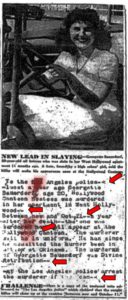
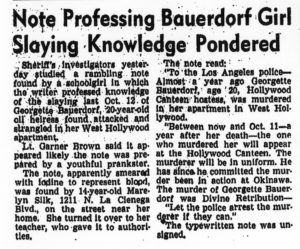
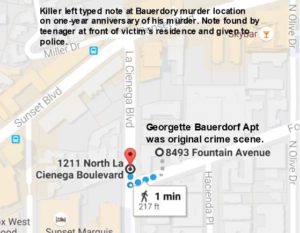
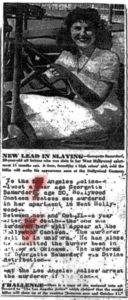
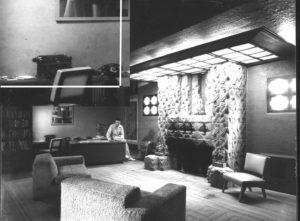
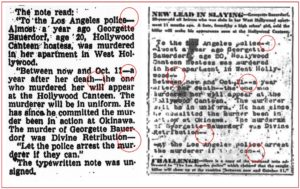
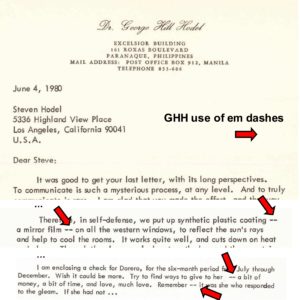
Dear Steve, In going over the murderer’s Georgette Bauerdorf note, I just have to say that I have never heard of someone writing a note and then spilling, on purpose, a substance to represent blood. Maybe I’ve just not come across it or heard of it before, but it seems unusual to me. Thanks and keep up the good work!
Best wishes always!
As mentioned in both BDA and MOST EVIL he was copying the MO and Signature of one of his inspirations, “Jack the Ripper.” JTR used red ink in his taurnting letters to the police/press to mimic blood. So, I believe GHH did the same. Just a variation on the theme. Since he was a medical man who had iodine in his “black bag” why not use that? And he did.
Yes, those double dashes are rare & clues continue to stack up against your dad. These women, although gone for years, still deserve justice!!!
I’ve been reading your blog and am convinced the Bauerdorf murder was committed by Dr. Hodel. The iodine on the note is simply too compelling to be ignored. Also the fact that the killer used a bandage or some type of medical gauze to gag her. It’s too bad there was probably no way in those days to trace that piece of “cloth” as they referred to it (or sometimes they called it a washcloth?), to track it to where it had been manufactured and conclusively prove that it was medical in nature. I am going to read your book soon, maybe you go into that element more. But it certainly would have been a great lead. I’m wondering if they just let that potential clue drop or whether it simply wasn’t possible to track it down? This is an amazing blog, I couldn’t stop reading!
DD: Yes, I agree that the case is circumstantially very strong on Bauerdorf.
Re. the “gag” as you will discover in BDA I (be sure to get the July 2006 paperback ed. with the two updated chapters) I do cover the LASO detectives follow-up. It was an ace-bandage of a type not found/sold in LA for about a decade prior to the crime. Also, LASO contacted and investigated the two Chicago Lipstick “Bathtub Murders” that followed the Bauerdorf killing by just 8-12 months. They felt they could have been connected. (I argue and present evidence in my second book, MOST EVIL, that THEY WERE. All my best, Steve
Leaving a crucial note in a dirty envelope that might never have been found or, if found, made public seems very odd. It is certainly not consistent with the behavior of the Elizabeth Short killer.
The actual details of how and where the Bauerdorf Note was found are sketchy at best. There may have been a “report to police” that simply was not reported by the press? Consider some of the other Lone Woman Murder Notes: Boomhower Note written on a purse and left in a phone booth. Kern Note mailed to police and received two days before body found. Short Note left in glove compartment of Cab with orders to take it to the press, “I have your cab number.” 1947 Santa Monica Lillian Dominguez Note left under door of Furniture Store on back of card of Mexican Restaurant stating, “I killed that girl in Santa Monica. I will kill again.” (Summarized in BDA II edition 2012) Chicago Lipstick Murder Notes posted on telephone pole near crime scene in lipstick and a note tied to a rock and thrown in yard. In light of those examples, the Bauerdorf Note is not that inconsistent. SKH
we tend to think of things like they happen today.
when i was a kid, every mom had iodine in the medicine cabinet. doctors would have it in their bags but it would be in almost every household. it would seem more related to jack the rippers note (copycat) because iodine was very common back then. the other points seem strong but not the uniqueness of iodine. could you please investigate my dad, i think he killed or caused my mother death. yeah, you are probably busy with this one but, it sucks to have an evil dad, as you and i know, mike
Steve, I see from an article “South Pasadena High Picks Selling Team” (LA Times, Jun 5, 1923) that your father could be a stickler on spelling when he wanted to be — probably punctuation and grammar, too. GHH seems to have been in the papers a lot as a kid — perhaps that became an addiction. BTW, I also noticed a George Hodel – not 100% sure it was your father – involved in a Pasadena Players production of the Restoration comedy “Way of the World” (“Congreve’s Old Drama is Revived”, LA Times, Nov 30, 1924). I searched and could not find the “promise is a promise” language in the text of the play, although it does deal much with promises and the idea of “worldliness.” So, maybe another angle on the mystery telegram to Elizabeth Short. -LW
Your investigations continue to fascinate with their detail and complete and thorough explanations!
BS: Thanks Bob. I am so grateful for the individual contributions/emails from readers like the English teach/tech writer, “P.M.” here in the Bauerdorf Note, who immediately identified how unique and skillful was the punctuation in the letter. Have had so many contributors, over the years who have, like P.M., become my “partners” in the investigation. They have contributed so much to advancing the evidence. skh
Steve,
Is any of the evidence from this murder or any of the other “Lone Woman Murders” still in possesion of the LAPD?
While reading this, I was reminded of the earlier “White Gardenia murder” of Or a Murray. Were you aware that in 1938 a book called “Death Wears a White Gardenia” by Zelda Popkin was published by Dell books? The plot of the story is not similar to the circumstances of Mrs. Murray’s murder, but the title really stand out.
I’ve read your latest book… twice and am again very impressed with your investigation! Keep up the great job of exposing the truth!
Regards,
Jim Henson
Jim: Today’s LAPD has to my knowledge never even looked at the linkage of the “Lone Murder Woman’s.” They are seemingly unaware that the Department was investigating them “as connected” back then. The problem is they don’t want to look. If they look they will discover, what the original investigators KNEW and I discovered, at least nine serially connected murders from the 1940s. LAPDs position today is, “We don’t have time to look at them. We are too busy with current investigations.” Which, of course, is total BS.
As far as the “White Gardenia Murder” don’t know if you saw the blog, but I am convinced GHH’s inspiration was taken from a Suspense Theatre broadcast of “The White Rose Murders” that occurred just a few weeks prior and aired starring, Maureen O’Hara. See link here. http://stevehodeloldsite.staging.authorbyteshosting.com/wp-admin/post.php?post=3669&action=edit
It is also quite possible that George and Elizabeth Short actually attended the airing in Studio A in Hollywood as they did the later 1947 Jack Carson broadcast just ten days before her murder. We now know that George and Man Ray were acquainted with Elizabeth in 1943 as we have the new BDA II discovery of Man Ray’s painting, “L’Equivoque”.
The note shows more than an understanding of the em dash. It also shows a good understanding of how to properly break lines. The alignment is called “ragged right,” and it’s not so easy to get it to look good. Ideally, you don’t want any singleton words, or for one line to be greatly longer than the next. They should overlap fairly well, and they do. Making this work on an old typewriter probably required for the writer of the note to compose it to fit, somewhat on the fly, which is something journalists had to learn to do—rephrase to help with copy fitting.
It looks like he also was familiar with at least one particular editorial style that provides conventions for how to treat specific terms numbers, etc. The use of numerals in “age 20” and the treatment of the date “Oct. 11” reflect typical journalistic style, which sought to save space. Often as an editor I see that authors handle these details in a messy, unstructured way, and they also tend to treat the terms as they sound, such as “age[d] twenty”and “Oct. 11th.” The use of the ordinal for a date is especially prevalent ime among people who don’t work in publishing, and I’d expect that tendency to be stronger in the past before word processing.
Angela: Thanks for the additional professional editorial input. Much appreciated and very interesting observations. Regards, Steve.
You’re welcome, Steve. I’ve also worked in research in a couple of different areas, and although on this blog I may be preaching to the choir, should anyone read this comment, the amount of data you’ve accumulated stuns me. And I haven’t even seen all the data yet! Major, high-stakes decisions are made with much, much less information than you’ve uncovered, and with far less analysis. Obviously, in a court of law the standard would be “beyond a reasonable doubt,” but I already see you’ve met that standard regarding the BD murder, and that LAPD certainly could have met that standard had there been no coverup.
On a different note, as a woman who like so many others has been on the receiving end of violence and misogyny enabled by institutionalized power structures, I greatly appreciate your work in shining new light on these victims and showing respect for them. Thank you.
Angela: Again, my thanks. I started out in 1999 confident that I would be able to exonerate my father from any criminal activity as relates to the Elizabeth Short “Black Dahlia” investigation and within eighteen months by simply following the evidence, discovered he was, in fact, a super misogynist and master sadist. My “hot button” has always been the abuse of power, which is what George Hill Hodel was all about in the extreme. In recent years I see a slow but encouraging trend toward recognizing just how universal the problem is, especially toward women, so am somewhat encouraged. Again, my best.
Steve: The mellifluous sentence “He has since he committed the murder been in action at Okinawa” doesn’t sound like one a “youthful prankster” would invent– unless he had a predilection for “stilted elegance” and “meticulous speech.” -LW
LW: Agreed. And, it does sound like someone who is definitely keeping up with the War. The typewritten note appeared in the Examiner newspaper on September 21, 1945. See below link to “The Battle of Okinawa” which “action” was fought on Okinawa from April 1-June 22 and was the largest invasion in the Pacific, lasting 82 days and known as, “Operation Iceberg.”
https://en.wikipedia.org/wiki/Battle_of_Okinawa
Steve: Something about this story puts me in mind of the Zodiac / Count Marco letter. According to his obituary, Marco Spinelli was badly wounded at Tarawa atoll (“the toughest battle in Marine Corps history”) in 1943, but never spoke publicly about his wartime experiences. The bio on the flap of “Beauty and the Beast” portrays Marco as an aristocratic playboy with no reference to the war. Spinelli was widowed before his service in the Pacific, and it looks like he was working less than a half mile from the Roosevelt Building in Los Angeles by the late forties. Makes me wonder if GHH knew Marco back then and the odd “hell-hole from whence it came” dig in the Red Phantom letter was a reference to Tarawa. I guess that remark could be a number of things — some kind of anagram or puzzle, a JtR reference, or pure gibberish. It is curious. -LW
LW: Yes, could be or not be. One of my new favorite and cautionary word definitions that I’ve got posted on my wall by my desk is “SCOTOMA- The Mind sees what it chooses to see.”
Steve: Man Ray and the Surrealists made a living out of that!
Steve,
Do you think Man Ray could have been involved with the Murders also ?
Amber M: Tough question. Initially, I thought it was just George ALONE, but with the new evidence I am learning toward more suspects involved at the Franklin/Sowden House on Jan 14-15, 1947. Possibly Fred Sexton and maybe “The Baron” Ernst Harringa and ??? My feeling is that Man Ray was probably not present but??? He and others certainly KNEW after the crime and as you may know paid HOMAGE to it.
If u study the murder case of Georgette then u would find that it is not related completely to the black dahlia case other then I will admit one of the perpetrators in the black dahlia murder killed Georgette in 1944 and I do believe the man who killed her was Fred sexton for the fact Georgette was seen in the company of a swarthy dark hair man and Fred sexton was a swarthy man with dark hair plus I eliminate George hodel in Georgette murder for the fact if he was the killer of the black dahlia like Mr Steve hodel has presented then his mo in the dahlia killing do not match the same mo in Georgette case in which I believe Fred sexton matches the killer profile being that Georgette was killed by a crazy sex maniac and remember if you read Fred sexton bio then u would know he was a sex predator after all we are talking about a man who has been sexually assaulted his own kid daughter at that time plus his step daughter yrs later so he fits the profile of Georgette rapist and murderer plus if you look at the yrs she was killed that was doing the war yrs to which sexton moved around the whole la area doing that time to where he worked in Hollywood at in a film studio and he had connection in Hollywood to where he made had access to that same canteen party Georgette attended..and if he wasn’t working in the film studio then he was driving cabs at night and if it could prove Georgette left that party in a cab then it would be a strong connection placing sexton in her company if it could determine if sexton drove cabs then round the same area nightshift round the same time she moved to the party from the party strong case and I believe it to be true..and I also believe that the Louise Springer murder and crime writer James ellroy mother murders are related I believe the same killer killed Louise Springer in 1949 and resurfaced in El Monte CA and killed jean ellroy 9 yrs later and I believe Fred sexton was the killer in both those murders for the fact he used the same mo to kill Louise Springer with a clothesline cord and 9 yrs later he killed jean ellroy in the same fashion with a clothesline cord and a nylon stocking..plus he beat both victims before he raped them and raped them before he killed them by strangulation…and in the Louise Springer murder and jean ellroy murder both times jackets was used in the murders plus the same way Louise Springer skirt was tangled round her hips jean ellroy dress was tangled round up her dress the same fashion in both killers to make me believe Fred sexton killed both Louise and jean .and plus if u look at the months in which Louise and jean was killed in June the same month Louise in June of 49 jean In June of 58 that’s a pattern there and if u look at Fred sexton his birthday was in June so it seem strange to me that both victims was killed in the same month of Fred sexton birthday weeks after Louise 7 days after sexton birthday jean less then three weeks after sexton birthday so to me all this don’t seem like a coincidence and I believe it all to be true
Jarvis:
Admittedly, many of the “LA Lone Woman Murders” (with the exception of those demonstrating surgical skill) could have been committed by either GHH or his decades-long accomplice, Fred Sexton. As I have indicated in previous publications, I do think the Jean Ellroy murder by “the swarthy man” was very likely Sexton based on composite drawing etc. However, the Springer murder, based on the information presented in “The Martin Letter” recently published in BDA III (The Afterword) provides strong compelling evidence that GHH committed that murder. But, much more evidence to come in “The Early Years” so STAY TUNED.
Mr Steve you are 100% right yes it been a serial of la lone woman killing involving surgical skills I would say even after the Cleveland torso slayings and i would like to say that you have elevated the whole body of evidences that I seen no past and present law enforcement officers has attend and that’s body of evidences itself presenting Most if not all of it regarding some of the most brutal and mysterious unspeakable crimes Of the early to mid 20 century doing the pre and post black dahlia era truly remarkable and ground breaking sir…….and I patiently participate in new update and info concerning the subjects in which we briefly discussed..
And Mr Steve I want to add one thing on the murders of Georgette and Louise Springer first Georgette I think I may have made a error as I believe what u said about your father being Georgette killer does make alot of sense for the fact that the only way anyone could had gained access to that party would be soldiers or a man and woman on uniform and I seen pictures of what u had displayed of your father in such a uniform I only wonder if that was the same one he wore at that canteen party that night but it do adds up now and I truly see that the evidence was in law enforcement face the whole time your father George hodel send letters may have attended another one of those canteen parties after the murder and I believe your father was swarthy looking as well so I follow the evidence I believe now he killed her and the Louise Springer murder I would include your father in it but I just can’t scribble the thought out my head how witnesses in that case have said that a dark hair man they seen doing or after the crime and the other witnesse I believe stated they seen a man with a limp now if I can remember the bio of Fred sexton like a year prior to the Louise Springer murder got involved with a married woman and the husband decovered the affair and when he came after sexton sexton in his escape jumped from his second story studio and injured his leg real bad so I ask the questions Did that injury cause a permanent limp and if what the last witness said they seen a man the killer walking with a limp then could it include sexton in it as her killer and your father just as a conspirator since both witnesses sightings of the killer as u look at the first witness having dark hair that could had been your father but the second one having a limp and remember sexton sustained that injury in 48 that kind of make sense as well